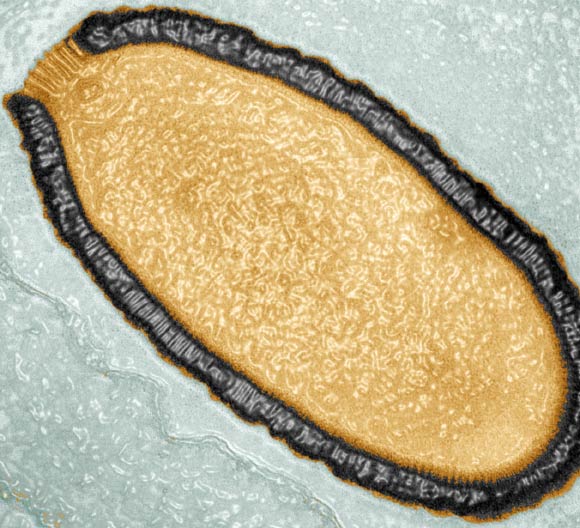A team of scientists from France has discovered a new genus of giant virus in 30,000-year-old ice in the north-eastern Siberia, Russia, and managed to revive it in the lab.
Although the new virus, named Pithovirus sibericum, is harmless to humans and animals, it is still infectious.
The size and amphora shape of Pithovirus sibericum are reminiscent of the recently discovered Pandoraviruses, but the analysis of its genome and replication mechanism proves the new virus is very different.
According to the study published in the Proceedings of the National Academy of Sciences, the Pithovirus genome contains much fewer genes – about 500 – than the Pandoravirus genome (up to 2,500).
The researchers also analyzed the protein composition of Pithovirus (1.5 microns long and 0.5 microns wide) and found that out of the hundreds of proteins that make it up, only one or two are common to Pandoraviruses.
Another difference between the two viruses is how they replicate inside amoeba cells.
“While Pandoravirus requires the participation of many functions in the amoeba cell nucleus to replicate, the Pithovirus multiplication process mostly occurs in the cytoplasm – outside the nucleus – of the infected cell, in a similar fashion to the behavior of large DNA viruses, such as those of another giant virus family, Megaviridae,” said lead author Dr Matthieu Legendre of the CNRS’ Institut de Microbiologie de la Mediterranee and his colleagues.
“Paradoxically, in spite of having a smaller genome than Pandoravirus, Pithovirus seems to be less reliant on the amoeba’s cellular machinery to propagate. The degree of autonomy from the host cell of giant viruses does not therefore appear to correlate with the size of their genome – itself not related to the size of the particle that transports them.”
The scientists said Pithovirus sibericum is the first member of a new virus family. Its discovery brings the number of distinct families of giant viruses known to date to three.
The discovery suggests that amphora-shaped viruses are perhaps as diverse as icosahedral viruses, which are among the most widespread today.
“This shows how incomplete our understanding of microscopic biodiversity is when it comes to exploring new environments.”
“Finally, the study demonstrates that viruses can survive in permafrost almost over geological time periods – for more than 30,000 years, corresponding to the Late Pleistocene.”
The findings have important implications in terms of public health risks related to the exploitation of mining and energy resources in circumpolar regions, which may arise as a result of global warming.
“The re-emergence of viruses considered to be eradicated, such as smallpox, whose replication process is similar to Pithovirus, is no longer the domain of science fiction. The probability of this type of scenario needs to be estimated realistically.”
______
Matthieu Legendre et al. Thirty-thousand-year-old distant relative of giant icosahedral DNA viruses with a pandoravirus morphology. PNAS, published online March 03, 2014; doi: 10.1073/pnas.1320670111








